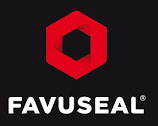#favuses
Text
Petite Teen Blackmailed For Swapping The Prices on items
Tranny from Brazil with a big ass fucks a guy anal
Diana Grace , Judy Jolie In Stepdaughter Makeover Muff
OOPS THE CUM DRIPPED OUT ~ CLOSE UP 69 BLOWJOB NO HANDS WITH CUM IN MOUTH
Big dick gay latino men jacking off my mouth and free naked man When
Tied up gagged slaves humiliated in public
Borracha manoseada
Horny GILF Willa P Gets her Cunt and Ass Drilled by a Cock!
olg slots and casinos sudbury
caliente cock coje disfruta esposa fuck latina mexicana mexico pareja puta sexo sexy swinger teen verga perrito
#synfuels#colt-pixie#wind-worn#firring#favuses#circumdenudation#duplication#Certhiidae#Serpula#stalin#alagadda#diversisporous#phantasmology#unclamorously#vanderwood#winter-beaten#tabashir#peroneus#Tuberculariaceae#thoughtful
0 notes
Text
i want to follow more people because i want silly mutuals. i will crawl through your window and sit in your couch.
5 notes
·
View notes
Text
“COMPLETE DESIGN INTEGRITY” concept-driven Polymer Based Fire Protection (PBFP) for Cables; Fire Protection Cable Tray and Cable Ladder

Hydrocarbon fire resistant ready-made cables are a revolution!
As the revised NEK-TS-606:2016 clearly points out, fire protection is becoming more and more an issue as the oil and gas industry are facing heighten demand for increased safety.
For the first time, engineering companies and oil companies can deploy "ready-made" 3rd party certified fire resistant cables based on a hydrocarbon fire scenario according to EN-1363-2.The consequence? Reduced financial cost, and a much lighter installation as the need for doing added passive fire protection in order to upgrade them to the level inherently found in the oil and gas industry is effectively removed.
So what does it actually mean that the engineering companies and oil companies can buy “off the shelf” HCF/pool fire certified cables? For the W&C industry, it is just another obstacle to tackle in order to become compliant with the newly adopted NEK-TS-606:2016. For the engineering companies and end-customers, it is nothing short of a revolution and will drive down the cost of a cable installation in numerous ways.
It is now up to the serious W&C manufacturers to inform, train and spread the word that “old school” thinking does not yield synergies and cost-savings for the oil companies. It is time for them to tap into the revolution that has found place and capture all the synergies inherently found and pass it on to the oil companies.
By deploying a ready-made HCF cable with “Complete Design Integrity” concept-driven Polymer Based Fire Protection (PBFP) Favuseal solutions and products, the following benefits can be immediately captured for the engineering companies and, ultimately, for the asset owner
Firstly, imagine that a cable tray runs thru a HCF rated fire zone on e.g. a FLNG, FPSO or an onshore installation like a refinery or a chemical plant. The traditional way of coping with this is to re-route the cable tray outside the HCF rated fire zone and avoid the problem. This way of “solving” the problem leads to added weight, more complexity in the design phase of the project, and ultimately, a nightmare for any inspections and repair works to be performed later on. Those days are now gone!
Secondly, imagine if there is no way around a specific fire rated zone. Consequently, the cable trays and cable ladder need passive fire protection in order to be compliant to the rated fire scenario found in that specific zone. The standard way of doing this is to apply a passive fire protection solution to the cable tray in order to reach HCF compliancy. The product normally adopted is fibre-based and will add some 60-80mm of thickness around the object to be protected. No way has any engineering company in the world design in added free space for installation of a passive fire protection system around the cable tray, so modification work can be expected. Another problem arising from adopting to fibre based solution is that the cables, assuming a power cable, can be subjected to de-rating. In order to avoid this, an electrical fan is normally installed in order to “flush” out the heat build-up inside of the cable tray at given intervals. Sounds complex? It surely is, but the good news is that it is a thing of the pass. Adopt to “off the shelf” ready-made HCF rated cables, and you got it all under control.
Thirdly, imagine the weight savings if the engineering companies now can route cable trays from A to B instead of re-routing them outside a given fire zone. In addition, if you add the weight savings by being able to skip doing passive fire protection of the actual cable tray in mention, it all adds up to a significant weight savings and, ultimately, a pretty appealing picture for the engineering companies and, therefore, the end-client.
Fourthly, as the need of adding fire jackets or some other sort of solution in order to upgrade the fire resistance of cables are removed, you will inherently also mitigate the risk of having explosive liquids in gaseous state being transmitted via the enclosure adopted
In conclusion, it is safe to say that the revised NEK-TS-606:2016 is a revolution. However, it is not a revolution for the W&C companies, but for the engineering companies and, ultimately, the end-clients. They are the ones that can reap all the benefits of the R&D work that needs to be done by the W&C manufacturers in order to launch HCF compliant cable portfolios. Will it lead to more expensive cables? Surely, yes, but that added cost per Lm should be marginal compared to the total cost of managing the fire risk for the assets owner by utilising and installing passive fire protection “in situ”.
For the sake of transparency, we here at Favuseal Wire & Cable does not sell cables. However, we will gladly put any engineering company and/or asset owner in direct contact with either Draka Prysmian or General Cable that has already developed and certified HCF portfolios for power, communication and instrumentation cables based on the hydrocarbon fire curve for 30 minutes or more
0 notes